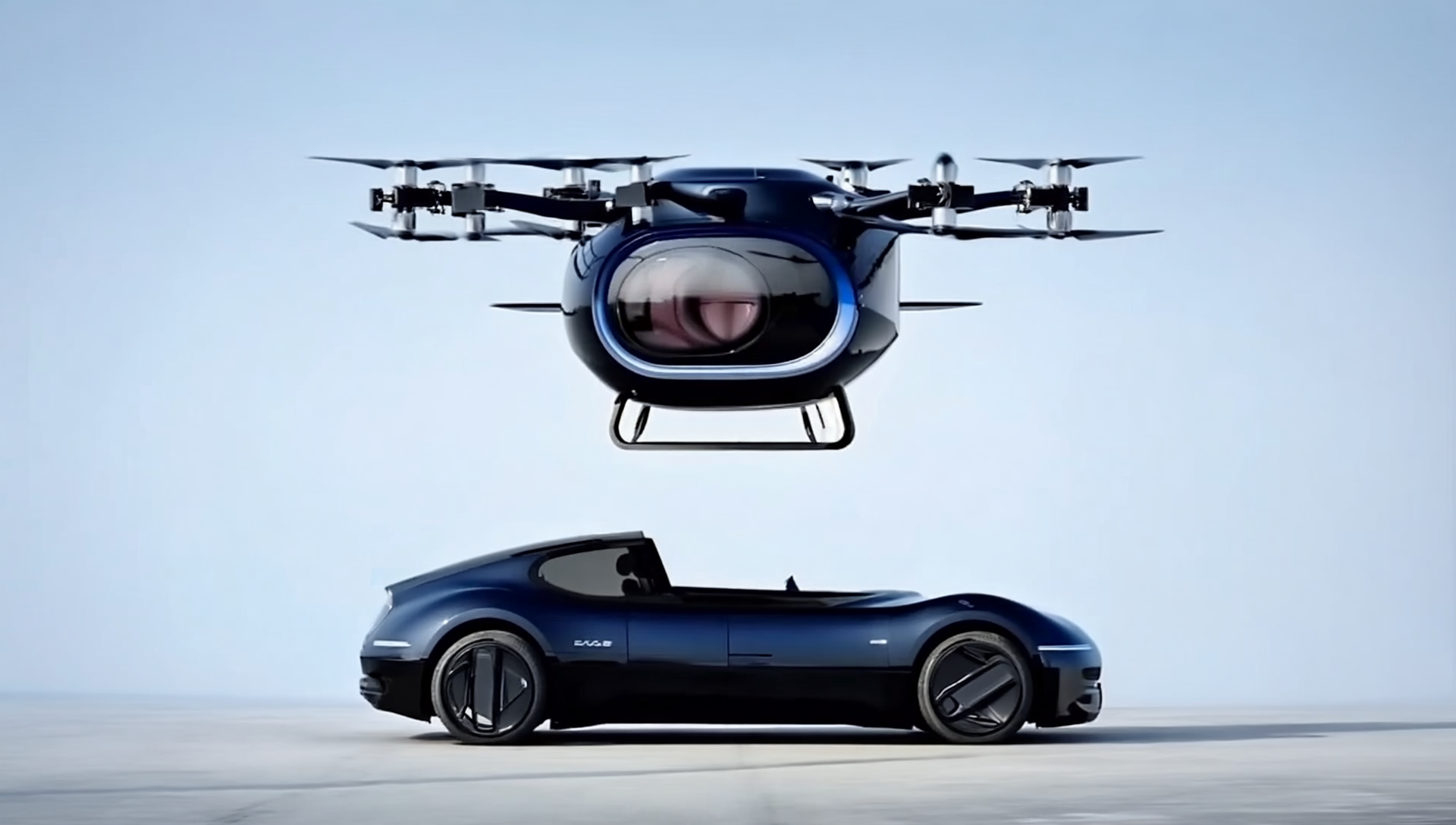The 15th China International Aviation and Aerospace Exhibition was the stage for an innovation that promises to revolutionize the future of mobility. GAC officially unveiled its autonomous flying car, the GOVE, with a spectacular take-off demonstration. The name GOVE, a meaningful acronym derived from the initials of GAC (Guangzhou Automobile), “On the Go”, “Vertical” and “EV” (Electric Vehicle).
GOVE has already been shown to the public with a maiden flight during the GAC Technology Day in 2023, and a low-altitude flight demonstration in an urban environment, flying over Guangzhou’s Central Business District last March. A further milestone was achieved on September 11, when GAC received the Special Flight Certificate for Civil Unmanned Aerial Vehicles, issued by the Civil Aviation Administration of China. This was a clear signal that this incredible innovation is about to enter the market.
How is GOVE structured?
The GOVE stands out as an all-electric flying car featuring a two-layer structure that can be assembled and disassembled. This modular configuration is the key to its versatility, enabling three operating modes: ground driving, air flight, and an intelligent air-to-ground docking system.
The GOVE frame is not just a stand, but acts as both an intelligent platform for autonomous take-off and landing, and a mobile charging station. Once separated from the cabin, the frame can autonomously locate a nearby charging station to recharge. Upon landing, it re-establishes a precise and secure connection with the flight cabin, facilitating flawless docking and providing immediate charging.
Flight technologies and safety
Aesthetically, the cockpit boasts a dynamic sci-fi look, as it is made of lightweight and resistant materials. It is a concentration of advanced engineering and is equipped with a multi-rotating system with 6 axes and 12 propellers. This structure, reminiscent of a large drone, guarantees a thrust per axis greater than a third of the maximum take-off weight, ensuring stability and power in flight.
GOVE’s flight control system features a “multi-eye” recognition system composed of a high-definition camera that can form a full-angle field of view. This software can complete real-time calculations through rapid and long-distance obstacle recognition. GAC also announced that it is working on further developments to meet the stringent safety requirements of the China Civil Aviation Passenger Aircraft Certification System. To date, GOVE’s robustness and performance have been validated through more than 400 flight tests.
The Boom of the Flying Car Market
GAC’s ambitions for GOVE are concrete and short-term. Forecasts indicate that by 2027, the company plans to launch a pilot operation for flying cars in two or three key cities in the Guangdong-Hong Kong-Macao Greater Bay Area.
This commitment reflects the rapid expansion of the low-altitude economy market in China. According to projections by the Civil Aviation Administration of China, this market will reach 1.5 trillion yuan (about 207.6 billion U.S. dollars) by 2025, and then exceed 3.5 trillion yuan (about 484.5 billion U.S. dollars) by 2035.
Such an attractive prospect that is pushing many Chinese manufacturers to invest heavily to make the most of this extraordinary opportunity. Interestingly, GAC and Xiaopeng Motors are both headquartered in Guangzhou, demonstrating how the city is emerging as a crucial hub for innovation in urban air mobility. In addition to these two, Chery and Geely are also positioning themselves at the forefront of this revolution. GAC’s GOVE is therefore a pioneer that charts the course of this new technological horizon, promising to change the face of urban transportation.






